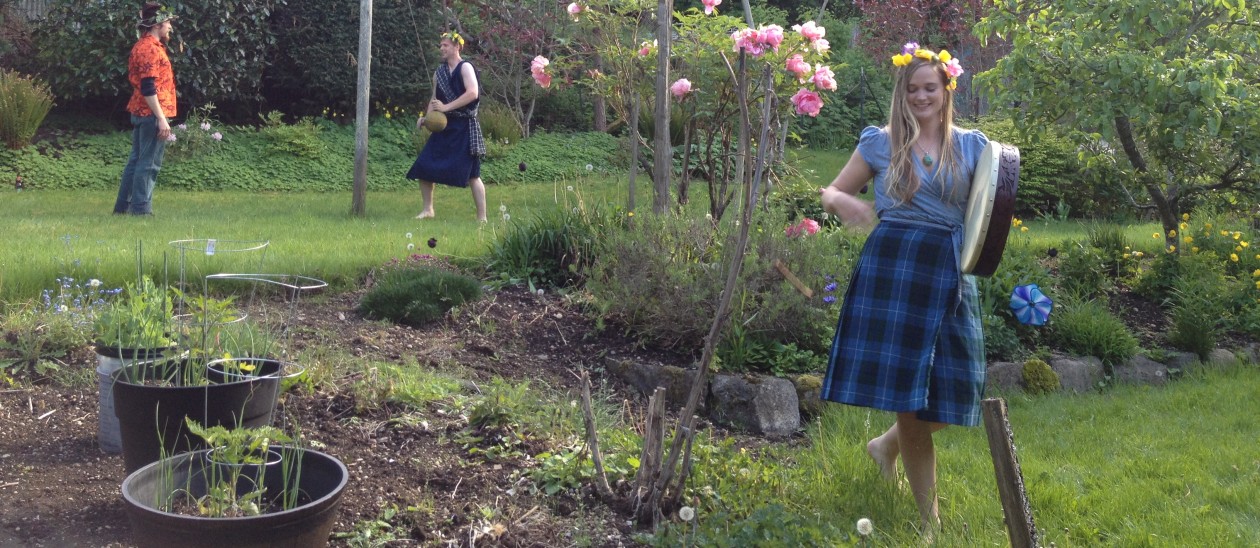
Pre-History: Separating Religion and Magick
One challenge faced in studying magick is trying to differentiate what is magick or witchcraft from the concept of religion. Much of religion revolves around magickal thinking, ritual, and symbolism, and much of magick revolves around gods or spirits and the enforcement of moral and social order. Trying to find an agreed-upon definition of religion is tricky, but trying to find a definition that clearly outlines how magick does not fit this mold has proven to be a trip down a rabbit hole rife with cultural bias, outdated theories, and academic shoulder-shrugging. The general consensus seems to be there is no general consensus. Many seem to define magick as what “others” do, as compared to what “we” do. However some scholars have tried to expand this definition to be more inclusive. Durkheim defines religion as
“…A religion is a unified system of beliefs and practices relative to sacred things, that is to say, things set apart and forbidden — beliefs and practices which unite into one single moral community called a Church, all those who adhere to them. The second element thus holds a place in my definition that is no less essential than the first: In showing that the idea of religion is inseparable from the idea of a Church, it conveys the notion that religion must be an eminently collective thing.” (Durkheim 44)
This leaves the door wide open to include magick, however it seems to limit the concept to magick that is specifically prescribed and sanctioned by an organized spiritual community. This would mean that the rites of communion or baptism in the Christian faith could be seen as magickal, but the love spell of the local cunning woman is not usually seen as religious. However, this delineation is not so clear when we discuss religions like Vodou, where a practitioner might appeal to the loa for assistance in the matters of love. Is this magick, religion, or both? The best conceptualization I can come up with so far is that magick and religion almost always go hand in hand as facets of one another, but are not the same thing as a whole. There are exceptions to this correlation, but even many of those are not as clear-cut as to make it easy.
It is likely that humanity’s first expressions of religion have their roots in magickal practices. Apotropaic magick, or protection magick used to ward off bad luck or evil intent by spirits or other people, is one of the earliest forms of magick known, dating back at least to the Paleolithic era (Miller 768). Apotropaic magick frequently utilizes a physical object or gesture such as an amulet, sigil, or making the sign of the cross. The flip-side of this practice is the use of a talisman or “lucky charm” to draw luck or good fortune to the possessor. Both the amulet and talisman are not limited to trinkets, sigils, and gestures. Actions and avoidance of actions or objects can be used as well. Not walking under a ladder can be seen as an apotropaic act, because to do so is to avoid bad luck. These objects and actions bring the supernatural into the physical world, giving the user a substantive and tangible reminder of the forces that are working in their favor.
The advent of tangible symbols such as the corpulent Venus figures of Paleolithic and Neolithic Europe was likely to ensure fertility using the philosophy of sympathetic magick, or “like begets like”, which is a common theory in the construction of magickal practices around the world. By making symbolic mental connections and observable cause and effect, early humans concluded that an object shaped like a human in nature could function as a symbolic homunculus for a living human and be used in the healing or harm thereof. To endow this object with the physical essence of that person, such a bit of hair or bodily fluid would strengthen that bond. As civilizations began to drift towards agriculture, the need to control the weather and other natural forces became critical. Observing that oak trees tended to be struck by lightning more often than other trees, the oak became associated with the Thunder God for many Indo-European cultures (Frazier). Therefore, the acorn had the power to protect the bearer from lightning strikes. Managing disease in a world without germ theory meant trial and error. The enigma of mental illness and neurological disorders meant the victim was possible possessed, and exorcisms or trepannation often followed. As none of those forces were controllable by what we consider conventional means today, magick became a reasonable response. Most importantly, it clearly often worked.
The continued reliance on magick in the modern world when other alternatives are available is a testimony to its importance to humanity. We still rely on supernaturally charged symbols, whether it is a rabbit’s foot or a crucifix. The placebo effect works, but science still cannot explain exactly how. We are still acting out tiny rituals and beliefs that have been a part of our human culture for tens of thousands of years. Magick gives modern humans the same sense of control and power over our own destinies that it gave our Paleolithic ancestors and every subsequent generation since.
References
Durkheim, E. (1965). The elementary forms of the religious life. New York: Free Press.
Miller, B. D., & Wood, B. A. (2006). Anthropology. Boston: Pearson/Allyn and Bacon.
Merrifield, R. (1988). The archaeology of ritual and magic. New York: New Amsterdam.
Russell, J. B. (1980). A history of witchcraft, sorcerers, heretics, and pagans. London: Thames and Hudson.
Vitebsky, P. (2001). Shamanism. Norman: University of Oklahoma Press.
Cavendish, R., Burland, C. A., Innes, B., & Eliade, M. (1995). Man, myth & magic: The illustrated encyclopedia of mythology, religion, and the unknown. New York: M. Cavendish.
Frazer, J. G. (1951). The golden bough; a study in magic and religion. New York: Macmillan.
